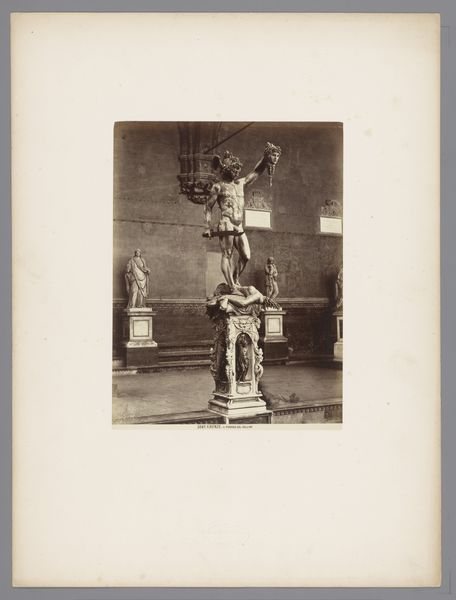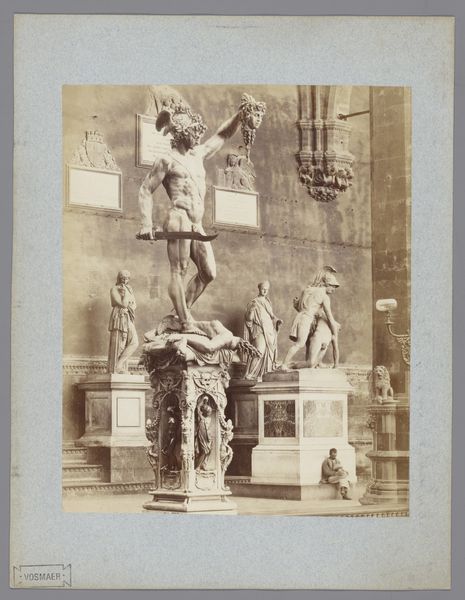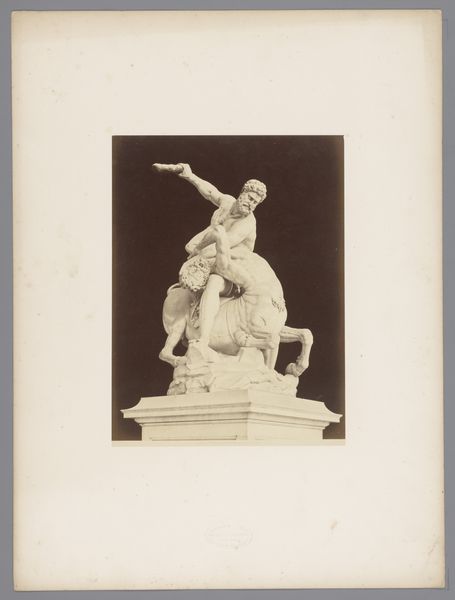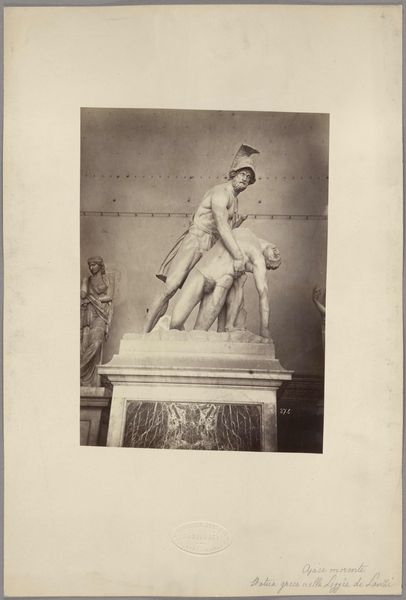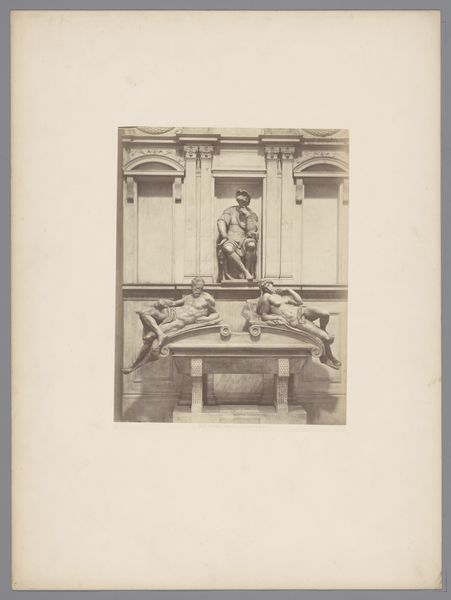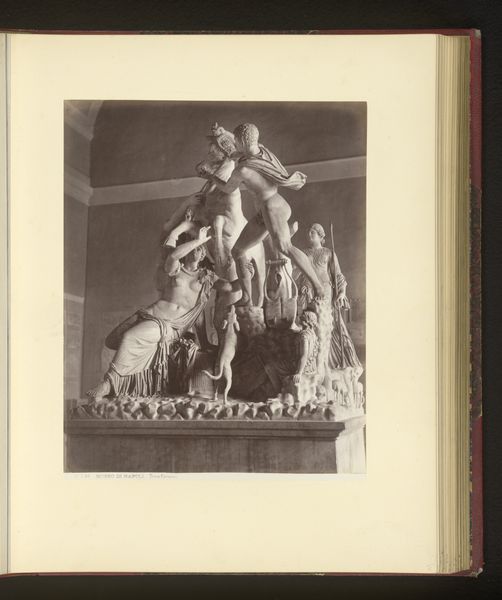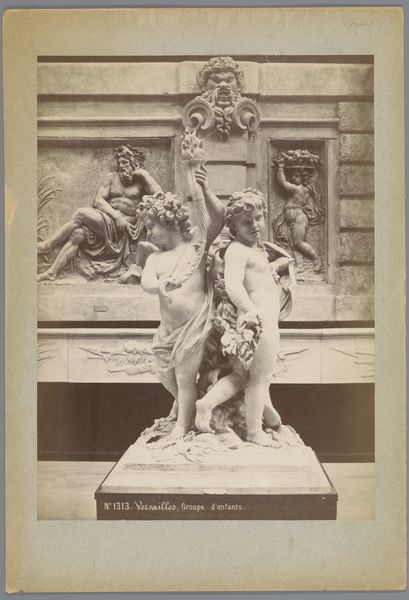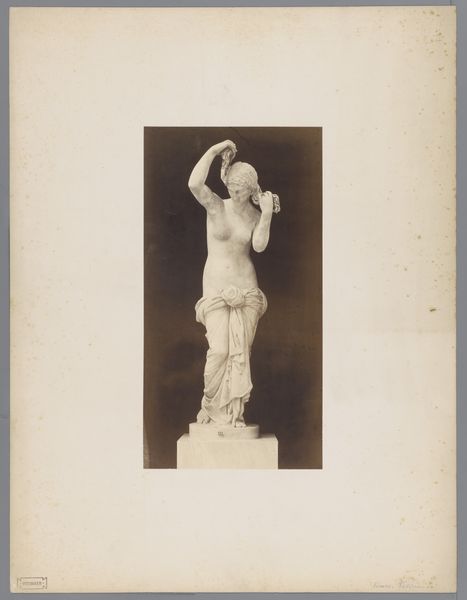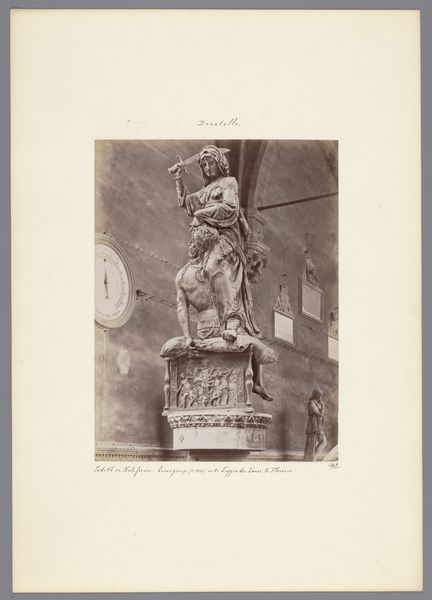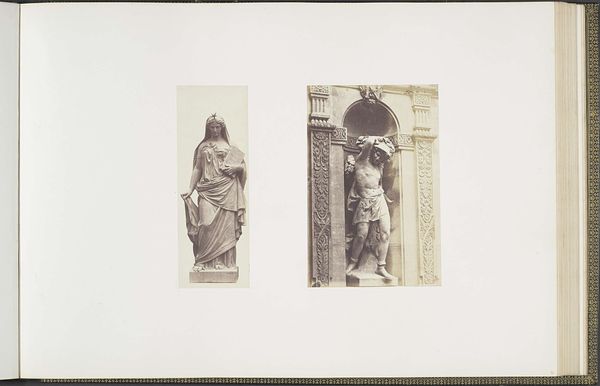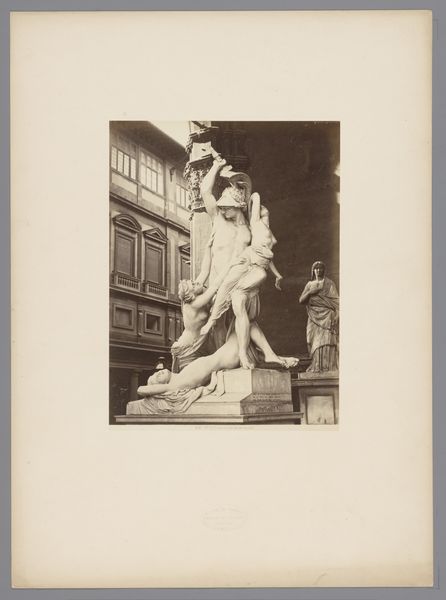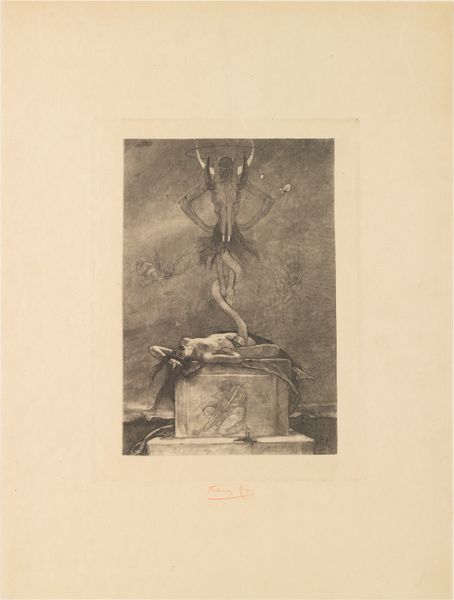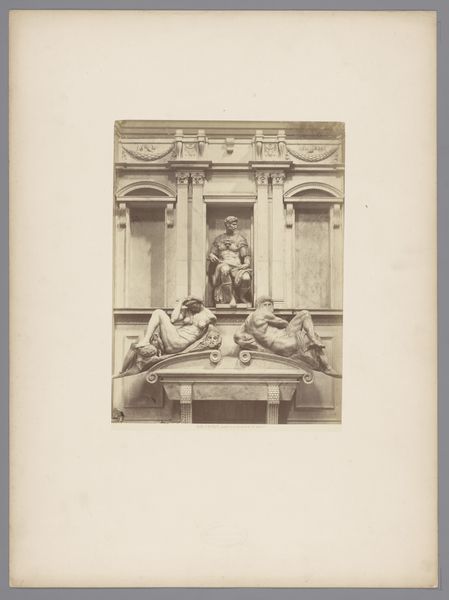
cardboard, albumen-print, paper
#
cardboard
#
albumen-print
#
photo of handprinted image
#
16_19th-century
#
muted colour palette
#
head
#
photo restoration
#
white palette
#
feminine colour palette
#
paper
#
unrealistic statue
#
framed image
#
watercolour illustration
#
italy
#
watercolor
#
statue
Copyright: Public Domain
Editor: This is "Florence, Perseus by Benvenuto, No. 1836", an albumen print on cardboard by Giorgio Sommer, dating back to about 1870-1880. It’s incredibly detailed. What really strikes me is the contrast between the smooth texture of the statue and the rough texture of the albumen print itself. What stands out to you in terms of form? Curator: Observe the photograph’s monochromatic palette. It minimizes color distractions, compelling us to concentrate on tonal modulations and how light interacts with sculptural form. The composition showcases a dominant vertical thrust echoed in the arrangement of the sculptures within the setting itself. The interplay of these forms contributes to a rhythmic visual cadence, wouldn't you agree? Editor: Yes, I can see that. The verticality definitely adds a sense of grandeur. The sculptor emphasizes this idea of overcoming Medusa by holding up the severed head of Medusa, drawing my eye up the frame of the photo, and the framing creates this dynamic rhythm as a composition, and that statue mimics its shapes. Are those Renaissance techniques from that time period influencing his choice? Curator: Precisely. Notice the dramatic positioning of the sculpture; such placement isn’t merely representational. Sommer strategically crafts our viewing experience to accentuate balance, proportion, and spatial dynamics intrinsic to the artwork. Do you note any symbolism within its composition? Editor: Well, the sword, the head... power and victory I would guess? And the use of light and shadow seems crucial to emphasizing the dramatic narrative embedded in the sculpture itself. Curator: Precisely! Now you're employing formalist critical thought to decode art effectively. Editor: That makes sense. So much of art is carefully crafted even down to the textural forms themselves to elicit a reaction or present a statement. I’ll definitely look at photographs and prints in museums differently from now on.
Comments
No comments
Be the first to comment and join the conversation on the ultimate creative platform.
